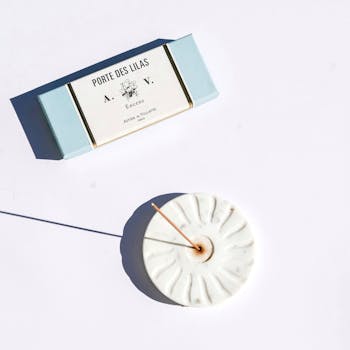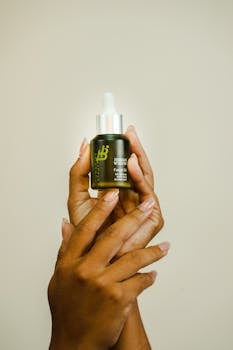As a consumer goods manufacturer or retailer, the last thing you want is to see your products damaged by mold and mildew. Not only does it harm the product itself, but it can also lead to customer dissatisfaction and negative business outcomes. If you’re grappling with this issue, you’re not alone. The call for anti-microbial solutions for product packaging has never been stronger. This article will delve into the importance of these solutions, how they work, and the tangible benefits they bring to your business. With the right insights and the right solutions, you can effectively shield your products and ensure they reach customers in their prime condition. Let’s dive in and explore how you can protect your products with anti-microbial solutions for packaging.
The Rising Need for Anti-Microbial Solutions in Product Packaging
In the fast-paced world of consumer goods manufacturing and retail, ensuring the quality and safety of your products from production to the hands of the customer is of paramount importance. This is where the role of anti-microbial solutions in product packaging takes center stage.
The Impact of Mold and Mildew on Consumer Goods
Mold and mildew, these silent foes, can wreak havoc on the quality of your consumer goods. From discoloration and unpleasant odors to material degradation, these microorganisms can render your goods unsellable or unusable, leading to significant financial losses, not to mention the potential damage to your brand reputation.
Furthermore, exposure to mold and mildew can lead to health problems such as allergies, respiratory issues, and in severe cases, serious health problems for consumers. This makes the prevention of mold and mildew growth an essential part of your product quality assurance process.
The Role of Anti-Microbial Solutions in Preventing Damage
Now, imagine a scenario where your product packaging itself is actively working to prevent the growth of these harmful microorganisms. This is precisely where anti-microbial solutions come into play.
These solutions are integrated into product packaging and are designed to inhibit the growth of microorganisms like mold and mildew. This not only extends the shelf-life of your products but also ensures enhanced product safety and hygiene.
Moreover, antimicrobial packaging can also contribute to a reduction in product returns and complaints, ultimately leading to higher customer satisfaction and retention.
As the awareness surrounding consumer health and hygiene continues to rise, the need for anti-microbial solutions in product packaging is more pressing than ever. With the right solutions in place, you can effectively protect your products from mold and mildew, ensuring they reach your customers in optimal condition.
In the next section, we’ll delve deeper into what these anti-microbial solutions are and how they work in protecting your products. Stay tuned!

Understanding Anti-Microbial Solutions for Packaging
Whether you’re in the food industry or producing consumer goods, the threat of microbial contamination is a constant challenge. With anti-microbial solutions, you can fortify your product packaging, ensuring the longevity and integrity of your products.
What are Anti-Microbial Solutions?
Anti-microbial solutions are substances added to packaging materials designed to inhibit the growth of microorganisms. These solutions can be used in a variety of consumer goods, from food to apparel, extending the shelf-life of products, enhancing product safety, and reducing the risk of product returns and complaints.
These solutions are part of a growing trend towards ‘Active Packaging’, where packaging materials are developed to actively prevent microbial growth. This shift in packaging approach is driven by consumer demand for more durable, hygienic, and sustainable products.
How Do Anti-Microbial Solutions Work?
The primary function of anti-microbial solutions is to create an inhospitable environment for microorganisms, preventing their growth and reproduction on the product. They achieve this by controlling the moisture levels within the packaging, a critical factor for microbial multiplication.
In essence, anti-microbial packaging systems work by integrating anti-microbial agents into the packaging material. These agents, once in contact with the microbes, disrupt their cellular function, effectively preventing their growth.
For instance, products such as anti-microbial stickers and PE sheets control the moisture levels within the packaging, creating an environment that’s unfavorable for mold and mildew growth. Other products like Dri Clay and Container Desiccants offer advanced moisture control solutions, protecting your goods from moisture damage during transportation and storage.
In a nutshell, anti-microbial solutions work by creating an environment within the packaging that is unfavorable for microbial growth, ensuring that your products stay fresh and safe from the factory to the retail shelf.
Understanding the mechanics of these solutions can help you make informed decisions about your product packaging, ensuring that you deliver the best to your customers, free from the worry of microbial contamination.
The Benefits of Using Anti-Microbial Solutions for Packaging
Embracing anti-microbial solutions for packaging offers a plethora of advantages that extend beyond just the prevention of mold and mildew. By integrating these solutions into your packaging process, you can significantly enhance the quality, shelf-life, and safety of your products, leading to improved customer satisfaction and reduced product returns and complaints.
Extended Shelf-Life of Products
One of the most significant benefits of using anti-microbial solutions in packaging is the extended shelf-life of products. The controlled release of antimicrobials from the packaging can prevent the growth of pathogens such as Campylobacter, Escherichia coli, and Salmonella, which are often the culprits behind reduced food shelf life. This not only means your products can stay fresh for longer but also reduces the risk of premature spoilage, leading to less waste and improved profitability.
Enhanced Product Safety and Hygiene
Anti-microbial packaging plays a crucial role in enhancing product safety and hygiene. By inhibiting the growth of harmful microorganisms, these solutions can significantly reduce the risk of foodborne illnesses, ensuring that your customers receive products that are safe to consume. This can bolster your brand’s reputation and instill trust among your customer base.
Moreover, the use of antimicrobials in packaging differs from the direct addition of preservatives in foods. The rate at which antimicrobials are released from the packaging can be controlled, meaning that food consumed rapidly will have less antimicrobial exposure, further enhancing the safety profile of your products.
Reduction in Product Returns and Complaints
The use of anti-microbial solutions can also lead to a reduction in product returns and complaints. By ensuring that your products are free from mold and mildew, you can significantly reduce the likelihood of consumers returning goods due to quality issues. This can lead to lower costs associated with handling returns and replacements, and also reduce the risk of negative customer reviews and complaints, helping to maintain your brand’s reputation in the market.
In conclusion, the benefits of using anti-microbial solutions for packaging are manifold. By extending product shelf-life, enhancing product safety and hygiene, and reducing product returns and complaints, these solutions present a win-win scenario for both manufacturers and consumers. Micro-Pak Distribution USA provides a range of innovative and effective anti-microbial solutions that can help you protect your products and boost your bottom line.

Micro-Pak Distribution USA: Leading the Way in Anti-Microbial Packaging Solutions
Overview of Micro-Pak Distribution USA
At the frontier of product protection, Micro-Pak Distribution USA is a force to be reckoned with. This industry leader is known for its innovative and effective solutions for preventing mold and mildew, from the manufacturing stage to the retail store. Catering to a wide range of consumer goods – from leather goods to textiles – their products are designed to ensure that your goods are displayed at their best, free from unsightly mold and mildew.
Unique Selling Proposition of Micro-Pak Distribution USA
What sets Micro-Pak Distribution apart from its competitors is its unwavering commitment to safety and sustainability. Their anti-microbial solutions are not just effective, but also eco-friendly. Since 2010, Micro-Pak has embarked on a mission to eliminate any negative environmental impacts of their business, aligning their practices with sustainability initiatives like the Higgs Index. This strong commitment to environmental performance results in products that not only protect your goods but also contribute to a healthier planet. From antimicrobial stickers designed for box-packed items, to PE sheets for polybag packed items, their range of products offer comprehensive solutions for mold and mildew prevention. Their advanced moisture control solutions, including Dri Clay and Container Desiccants, are designed to effectively manage moisture levels within packaging, creating an inhospitable environment for mold and mildew growth. With Micro-Pak Distribution USA, you get more than just protection for your products – you get a partner dedicated to sustainable practices and superior product preservation.

Case Studies: Successful Implementation of Anti-Microbial Solutions in Packaging
Case Study 1: Anti-Microbial Solutions in Food Packaging
Delivering Freshness with Antimicrobial Packaging
In the food industry, the battle against spoilage and contamination is ever-present. Antimicrobial packaging plays a pivotal role in maintaining the freshness and safety of food products. One such example is the use of antimicrobial films in the packaging of sensitive foods like bakery products, dairy products, and fresh produce such as fruits and vegetables. These films contain antimicrobials like algicides, bactericides, and fungicides that inhibit the growth of microorganisms, thereby extending the shelf life of foods 1.
The potential of antimicrobial packaging extends to meat, fish, and poultry products as well. The controlled release of antimicrobials into the packaging environment keeps these sensitive foods safe from harmful pathogens, including common food-borne bacteria like Salmonella and Campylobacter 2.
Case Study 2: Anti-Microbial Solutions in Apparel Packaging
Preserving Quality with Anti-Microbial Solutions for Apparel
Consumer goods manufacturers are not just limited to food products. Apparel and fabric-based items are also prone to microbial contamination, particularly during storage and transportation. As such, the use of antimicrobial solutions in packaging these products is crucial.
A great example is the use of antimicrobial PE Sheets in the packaging of fabric-based items. These sheets provide a safe and effective method for preventing mold and mildew growth, ensuring that the products reach the customers in the best possible condition. By regulating the moisture levels within the packaging, these sheets create an environment hostile to the growth of mold and mildew 3.
In essence, the implementation of antimicrobial solutions in product packaging is more than just a protective measure. It is a comprehensive approach to maintaining product quality, extending shelf-life, and ensuring customer satisfaction.
Footnotes

Future Trends in Anti-Microbial Packaging
As we step into the future, the trends in antimicrobial packaging are gravitating towards two primary directions: sustainability and technological integration.
The Growing Demand for Sustainable and Eco-Friendly Packaging
In the wake of increased environmental awareness, consumer preferences are rapidly shifting towards sustainable and eco-friendly packaging. The global war against single-use plastics is in full swing, with numerous countries imposing bans and restrictions on their use. According to the European Union’s Directive, single-use plastics are due to face a ban starting July 2021. China and Canada have similar regulations in place, emphasizing the growing demand for durable, environmentally friendly food packaging alternatives that are suitable for multiple uses.
Simultaneously, food packaging accounts for a whopping 40% of plastic production across Europe. A significant contributor to global waste, these plastic containers often become breeding grounds for bacterial growth, staining, and degradation. However, the advent of antimicrobial technology offers a beacon of hope. Built-in antimicrobial technology, such as Microban, is designed to protect plastic products from degrading bacteria, thereby enhancing their durability and reducing the frequency of waste.
The Integration of Technology in Anti-Microbial Packaging
As we further delve into the era of digitalization, the integration of technology in antimicrobial packaging is becoming increasingly prevalent. ‘Active Packaging’ is one such concept where the materials used in packaging are developed to prevent the growth of microorganisms and ensure the safety of its contents.
These developments have led to the creation of packaging systems that not only protect the products but also enhance their quality by preventing unwanted microbial growth and water vapor. Furthermore, these packaging systems prove to be particularly effective against common foodborne bacteria such as Salmonella and Campylobacter.
In short, the future of antimicrobial packaging is poised for exciting developments. With the focus on sustainability and technological advancements, these packaging solutions are set to redefine product protection and significantly contribute to environmental conservation.
Conclusion
In the face of growing consumer demands for product safety and longevity, anti-microbial solutions for product packaging have emerged as a game-changing strategy. They not only safeguard products against mold, mildew, and bacteria but also enhance shelf-life and maintain product quality. This results in reduced product returns, increased customer satisfaction, and ultimately, a boost in brand reputation.
The evolution of anti-microbial packaging solutions is being shaped by innovations in technology and a heightened focus on sustainability. As such, companies in the consumer goods sector are well-advised to adopt these solutions to stay competitive in the market.
One of the key players in this field, Micro-Pak Distribution USA, is leading the way with their advanced anti-microbial solutions. Their commitment to quality, safety, and eco-friendly practices make them an ideal partner for businesses seeking to protect their products and meet the evolving needs of their customers.
In conclusion, anti-microbial packaging solutions are not just a trend but a necessity in today’s market. They present an effective and sustainable way of ensuring product safety and quality, thereby delivering value to both businesses and consumers. As we move forward, the integration of these solutions into product packaging strategies will continue to grow, setting new standards in product protection and sustainability.

Recent Comments